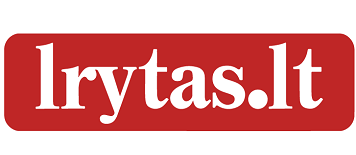
Lithuanian small and medium-sized enterprises (SME) are more optimistic about the future than Estonians, and a slightly smaller share of Lithuanian entrepreneurs than Latvians predict that the turnover of their companies will decrease next year, was stated in Laiko Ženklai programme (Time Signs-editorial note) lrytas.lt
This mirrors the sentiment of SME in the Baltic States, according to a survey conducted for Luminor Bank. Entrepreneurs in this segment usually have a good sense of the economy‘s pulse, as crises can hit their companies hard.
Almost half of the country’s SME’s believe their turnover will remain stable in the coming year, while 27% expect growth. Only 8% are pessimistic and predict a drop in demand for their products.
Economists believe that the European Central Bank’s policies are a significant factor in this sentiment. There has been no reduction in the very high base interest rates this year, but next year is expected to see such a turn.
The lower EURIBOR will reduce the cost of borrowing for businesses and stimulate consumption across the EU, which is why Lithuanian entrepreneurs anticipate growth, with more than a third of SME’s planning expansion.
High inflation is considered by 41% of businesses to be the biggest obstacle to expansion, while 40% say that the threatening geopolitical situation is the biggest obstacle to expansion.
There is no doubt that the attacks by Hamas and the Israeli response to the terrorists, which have created a humanitarian crisis in Gaza and divided Western societies, have significantly fuelled the anxiety.
However, this war has not led to a significant increase in commodity prices, and its impact on the world economy is relatively limited. This suggests that the conflict will not dampen business expectations in the Middle East.
Clearly, Estonian SVV’s expectations are the most pessimistic in the Baltic region. A quarter of Estonian entrepreneurs – three times as many as Lithuanians – expect their revenues to decline next year, and 56% of Estonian SVV’s have no plans to expand. 22% of Estonian entrepreneurs plan to expand, significantly higher than the Lithuanian figure.
It is easy to guess the reasons for Estonian pessimism. Lithuania’s Gross Domestic Product (GDP) was flat in the third quarter of this year, while Estonia’s fell by as much as 3.9 per cent.
Estonian business borrowing is also higher, and unabated high-interest rates are making the financial situation of many businesses very difficult.
Financial experts point out that Estonia, which usually pursues a tight financial policy, may have been undermined by the decision to allow pensioners to withdraw their funds from Tier II pension funds, which was considered populist. This has temporarily boosted consumption but is said to have fuelled inflation and is now holding back economic growth.
The sentiment of Latvian SME’s is similar to that of Lithuanians.
Latvia’s GDP contracted by just 0.1% in the last quarter of this year, and the business debt level is about the same as in Lithuania.
Slightly more Latvians than Lithuanians predict that their companies’ turnover will grow, but they are twice as likely as our entrepreneurs to fear that it will decline. The expansion intentions of Latvian companies are very similar to those in Lithuania.
Such indicators of expectations of SMEs in our country reflect the current state of the Lithuanian economy. For example, Swedbank economist N. Mačiulis calls it good but warns that domestic factors will not determine the future of our business but the competitive abilities of Lithuanian exporters.
Lithuania’s economy has been growing steadily for a long time, and only in recent years has it slowed down, primarily for geopolitical reasons.
However, despite the war in Ukraine, the energy crisis, inflation and high-interest rates, Lithuania’s export performance has been better than expected.
The German and Scandinavian economies, our main export markets, are stagnating, but Lithuanian companies are holding their ground.
What are the risks for Lithuanian businesses that export as much as 80% of their production?
The worst-case scenario would be a loss of attractiveness in export markets if competitors in other countries could offer better value for money to foreign buyers.
Lithuanian businesses cannot compete by reducing the cost of labour, as public sector wages are set to rise next year, unemployment rates are not high, and some sectors of the economy are even short of skilled workers.
The solution is to raise labour productivity by investing in technological innovation and improving workers’ skills.
A survey of business leaders showed that 54% of companies, especially in the manufacturing sector, feel a shortage of skilled workers regularly or frequently and that engineering professionals are the most in demand.
Efforts are being made to strengthen the links between vocational training and business and expand apprenticeships for potential enterprise employees. Vocational training experts see that employers’ expectations are often too high, as they expect a graduate or a skilled worker to be able to do the job that the company needs immediately.
But that’s what apprenticeships and traineeships are for.
Lithuanian business associations know that the growing competition and geopolitical challenges alone make it necessary to invest in the latest technologies and training for workers.
Those entrepreneurs who can follow this path in practice can expect the coming years to be successful for them.


Be the first to comment